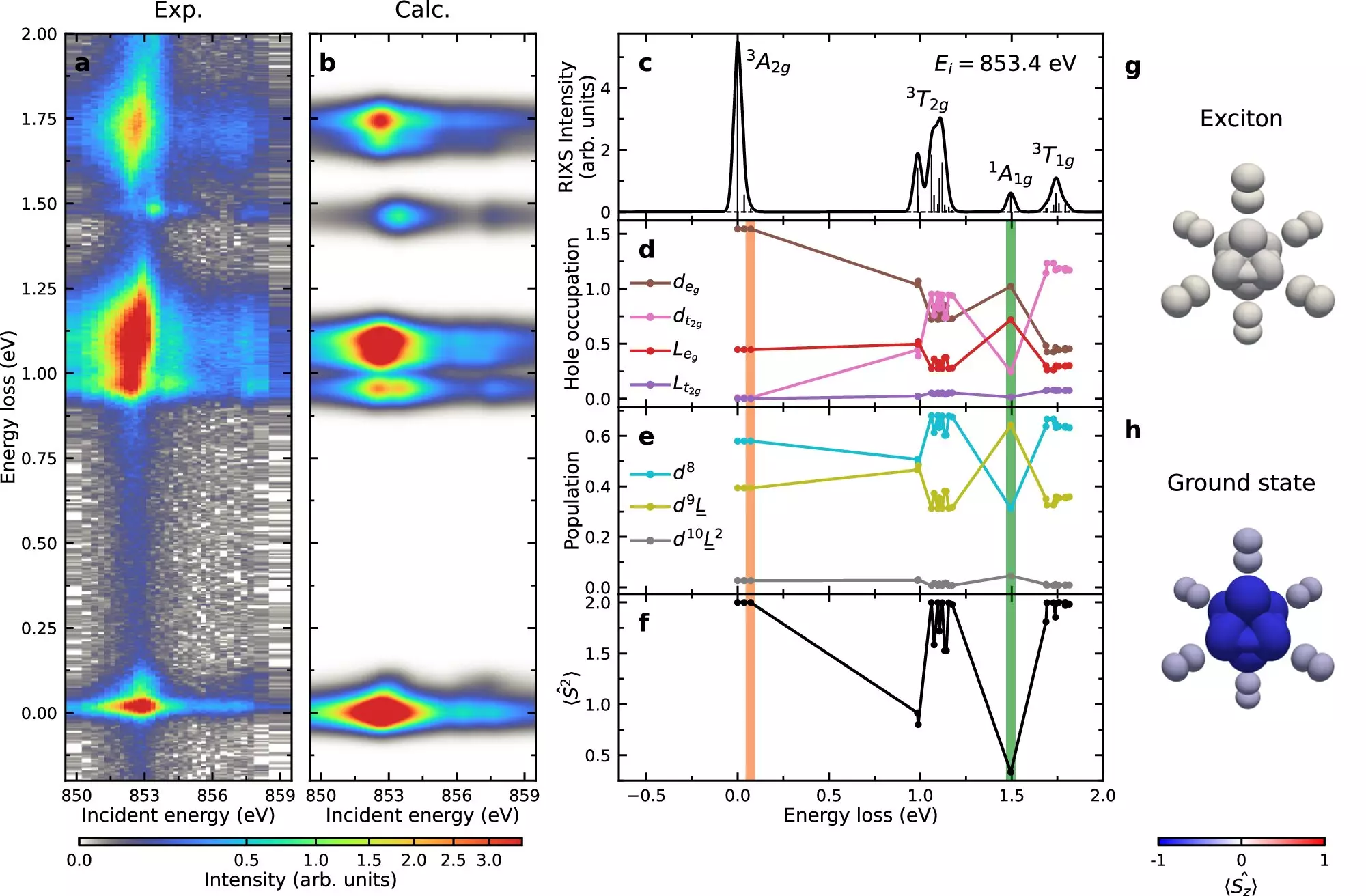The world of condensed matter physics is rich with phenomena that challenge our understanding of how interactions within materials give rise to unique properties. Among these highlights are van der Waals magnets, a class of materials whose behaviors have garnered intense scrutiny due to their potential applications in future technologies, particularly in the domains of information storage and quantum computing. Recent advances, notably from a research group at the U.S. Department of Energy’s Brookhaven National Laboratory, have shed light on the elusive excitons within nickel phosphorus trisulfide (NiPS3), unveiling crucial insights into their formation and interaction with magnetic structures.
The Significance of Excitons
At the heart of this research lies the intriguing particle-like entities known as excitons. Formed from an electron and a positively charged “hole,” excitons behave like bound states that can propagate through a material. Unlike traditional excitons that primarily function in semiconductors, the excitons observed in van der Waals magnets such as NiPS3 may possess characteristics that are responsive to both optical and magnetic stimuli. This duality opens up exciting avenues for technological innovations, particularly in the manipulation of magnetic properties through light and vice versa—an interplay that could redefine how information is processed and stored.
Exploring NiPS3 with Cutting-edge Techniques
The methodologies employed in the study at Brookhaven’s National Synchrotron Light Source II (NSLS-II) are notable for their sophistication. The researchers utilized resonant inelastic X-ray scattering (RIXS), a powerful technique that allows for high-resolution investigations into electronic properties. With its capacity to measure energy and momentum with exceptional precision, RIXS emerges as a critical tool for developing insights into the exciton behavior in NiPS3. By bombarding the material with ultra-bright X-ray beams and analyzing the resulting scatter patterns, scientists were able to backtrack and interpret the excitonic characteristics that dictate their formation and mobility.
A significant finding of the research is the influence of Hund’s exchange interaction on the excitons in NiPS3. This principle governs the energetics of electron spins and is critical in determining how excitons form and propagate through the crystal lattice. The study revealed that the energetic framework provided by Hund’s rule not only facilitates exciton formation but also influences its propagation akin to a spin disturbance called a double-magnon. This linkage of excitons to magnon dynamics underscores a complex relationship between electronic and magnetic phenomena—an intricate tapestry that researchers are only beginning to unravel.
The implications of understanding excitons in van der Waals magnets like NiPS3 are vast. As researchers refine techniques such as RIXS and electron microscopy, the potential for more comprehensive characterization of these materials will expand. Insights gained could lead to the development of new quantum materials that leverage both photonic and spintronic properties, thereby producing devices that are faster, more efficient, and capable of handling vast amounts of information.
The discovery of the unique behavior of excitons linked with magnetism not only sparks scientific curiosity but also sets the stage for innovative applications that could revolutionize how we approach data storage and processing. Researchers anticipate that as experimental techniques advance, we will see even more intricate details emerge about the fascinating world of excitons in various materials.
The exploration of excitons within van der Waals magnets such as NiPS3 represents a critical juncture in material science, where the intersection of optical and magnetic properties could lead to groundbreaking technologies. With studies like those conducted at Brookhaven National Laboratory, we inch closer to a deeper understanding of these phenomena, fostering an environment ripe with possibilities for the future of condensed matter physics and its applications. As we continue to probe the mysteries of excitons and magnetic interactions, the future of technology glimmers with promise.

